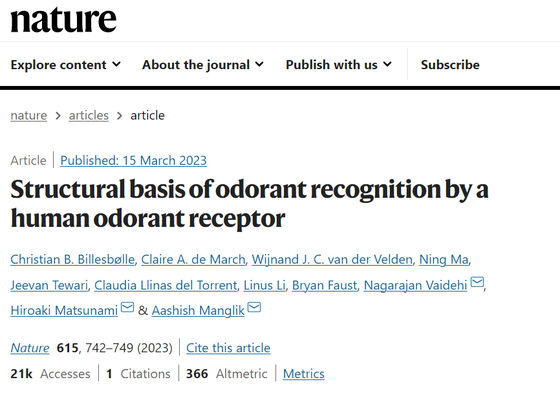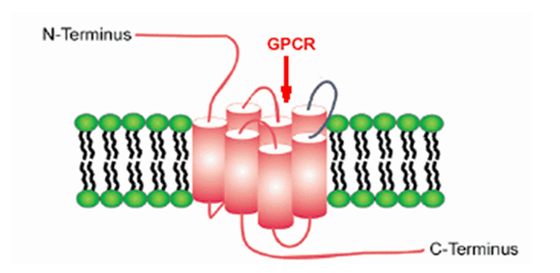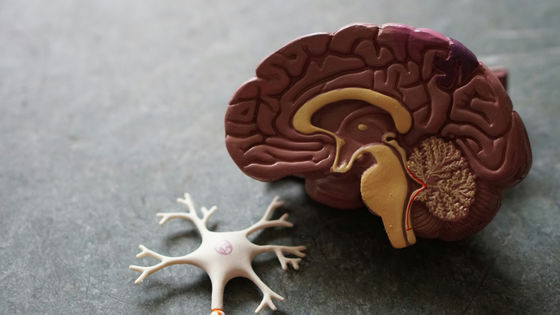The mechanism of `` olfactory receptor '' for humans to feel smell finally clarified

Humans have five senses: sight, hearing, smell, touch and taste. One of them, the sense of smell, is said to be felt by transmitting signals to the brain by capturing molecules drifting in the air with olfactory receptors in the nose. However, until now, it was not clear how the olfactory receptors functioned. It is reported that the mechanism of such olfactory receptors has finally been clarified.
Structural basis of odorant recognition by a human odorant receptor | Nature

How a Human Smell Receptor Works Is Finally Revealed | Quanta Magazine
https://www.quantamagazine.org/how-a-human-smell-receptor-works-is-finally-revealed-20230501/

Human olfactory receptors are in the form of G protein-coupled receptors (GPCRs) and have a sensor-like structure made of proteins. GPCRs capture different targets depending on their structure, and change their shape when they capture molecules that are the source of odors. This change in shape sends a signal to the part of the brain that processes odors, and it senses the smell. Research has been conducted so far on how this olfactory receptor changes its shape when it captures a molecule.
A study published in 2021 elucidated the transformation process of olfactory receptors in insects. However, since insect olfactory receptors work fundamentally differently from human olfactory receptors, this study did not reveal the human sense of smell.
In order to study the structure of olfactory receptors, it is necessary to prepare a sufficient amount of olfactory receptors, and to do so, it is necessary to produce GPCRs that become olfactory receptors in cultured cells. However, there is a problem that olfactory receptors do not mature properly even if they are cultured in a place that is not connected to the olfactory nerve, and this has been a major obstacle in advancing research.

So Hiroaki Matsunami, an associate professor at Duke University, collaborated with biochemists Arshish Manglik and Christian Bilesbülle at the University of California, San Francisco, who have been studying olfactory receptors, to develop We genetically modified the GPCR 'OR51E2', which is found in the intestine, kidney, prostate, etc., so that it matures on cultured cells other than olfactory nerves.
Then, we exposed the cultured OR51E2 to
As a result, it was found that the propionic acid molecule was trapped in a small bag in the structure of OR51E2. When the propionic acid molecule was confined in this bag, OR51E2 had almost lost its sensitivity to propionic acid and other molecules. We also found that OR51E2 has a small ring-like structure on the sac, which functions like a lid and locks onto the sac when it traps and binds propionic acid molecules.

However, this study only focused on OR51E2 and propionic acid. There are other olfactory receptors and binding sites in the actual nose, and it is not clear how olfactory receptors other than OR51E2 function. Associate Professor Matsunami said, 'Other human olfactory receptors, especially receptors that are closely related to OR51E2, are highly likely to function in the same way as OR51E2. The identification of the functional structure this time is the foundation of olfaction. I think it's the first step to understand the mechanism in
Related Posts:
in Science, Posted by log1i_yk







